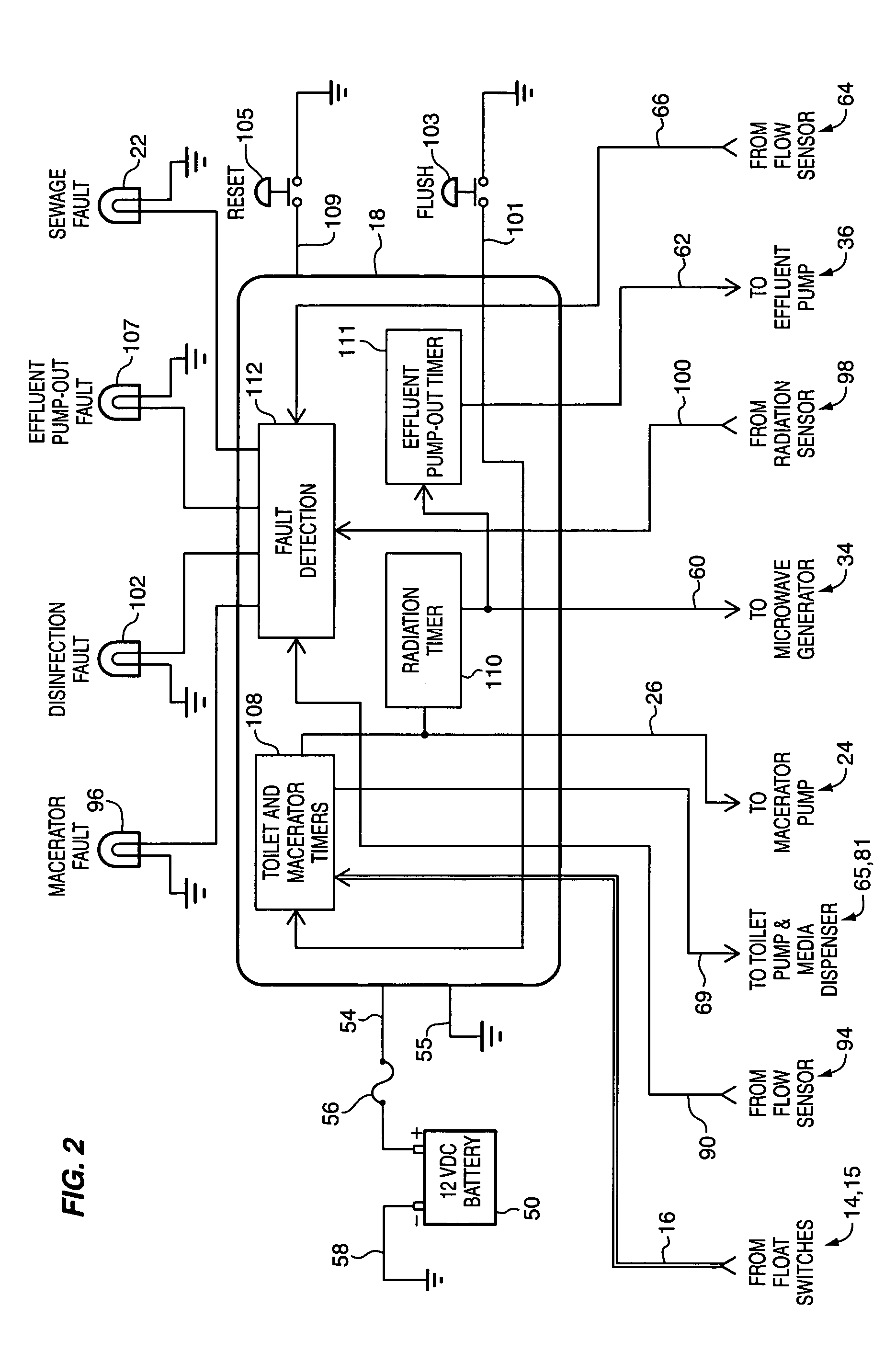Sewage treatment system for use in marine toilet and other remote toilets
a sewage treatment system and toilet technology, applied in multi-stage water/sewage treatment, vessel construction, nature of treatment water, etc., can solve the problems of unreliable and unpredictable effectiveness of msds of type “a” requiring human intervention, ineffective sewage treatment system may go unnoticed, and unreliable effectiveness of type “b” msds
- Summary
- Abstract
- Description
- Claims
- Application Information
AI Technical Summary
Benefits of technology
Problems solved by technology
Method used
Image
Examples
Embodiment Construction
[0016] The efficient, unattended and cost-effective marine sewage treatment system of the present invention overcomes the disadvantages of the prior systems described above by providing a system that does not require a periodic mechanical maintenance / cleaning schedule, by providing a system for detecting and identifying malfunctioning components within the system, by providing a system capable of 100% bacterial deactivation, by reducing nitrates and phosphates to levels below EPA standards for drinking water, and by producing an effluent having a BOD5 that is close to zero and a TSS that is half of the best Type II MDS. In other words, in terms of contents of bacteria, nitrates and phosphates, the effluent discharged by the system of the present invention will have the same environmental impact on the sea (or lake or river) as would discharging the same amount of the clean water from your home faucet. The system of the present invention is also capable of automatically shutting down...
PUM
| Property | Measurement | Unit |
|---|---|---|
| diameter | aaaaa | aaaaa |
| temperature | aaaaa | aaaaa |
| temperature | aaaaa | aaaaa |
Abstract
Description
Claims
Application Information
 Login to View More
Login to View More - R&D
- Intellectual Property
- Life Sciences
- Materials
- Tech Scout
- Unparalleled Data Quality
- Higher Quality Content
- 60% Fewer Hallucinations
Browse by: Latest US Patents, China's latest patents, Technical Efficacy Thesaurus, Application Domain, Technology Topic, Popular Technical Reports.
© 2025 PatSnap. All rights reserved.Legal|Privacy policy|Modern Slavery Act Transparency Statement|Sitemap|About US| Contact US: help@patsnap.com



